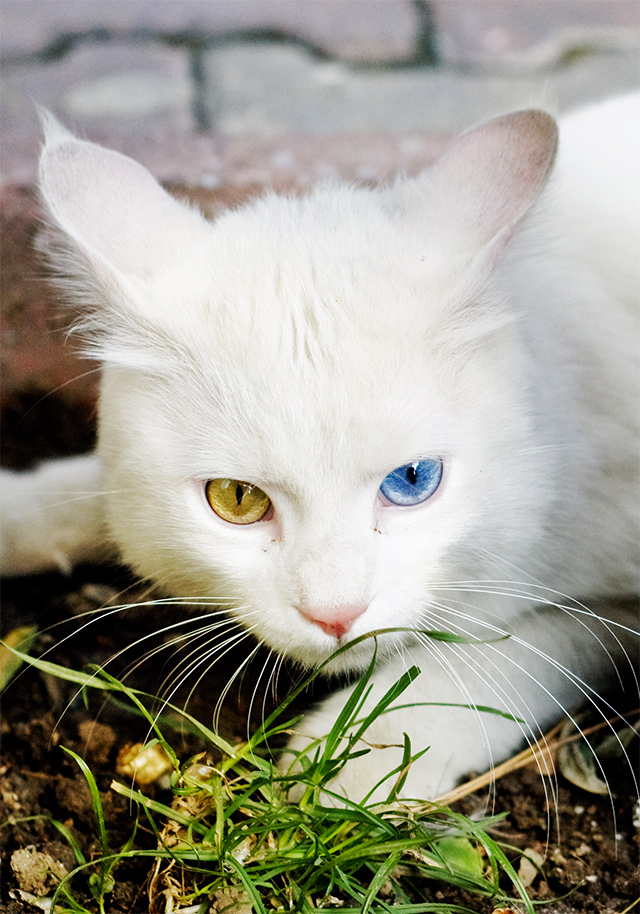
Turkish Angora cats are known for their heterochromatic eyes. Photo © Vladimer Shioshvili, licensed Creative Commons & ShareAlike.
The shores of the Aegean and Mediterranean are a refuge for two near-extinct species: The shy Mediterranean monk seal, whose numbers have dipped to under 600 worldwide, prefers the finned bounty found near the tiny islands off the shore of Foça in the Aegean region. So far, 100 are known to survive in Turkey’s waters. The gracious loggerhead sea turtle (Caretta caretta) chooses the warm sands found at specific sites along the coast of southwestern Turkey as its nesting grounds. The species and the breeding grounds are strictly protected, and efforts by teams of volunteers have been highly effective. İztuzu Beach and neighboring Köyceğiz, along the Mediterranean near Dalyan, have both been declared off-limits to development and designated Specially Protected Zones. Consequently there are more than a dozen sea turtle breeding grounds along the Mediterranean coast.Indigenous to central Anatolia are a slew of quadrupeds that used to roam wild in the steppe and along the Taurus Mountains. The fallow deer, which was introduced to Europe in the late 1st century AD by the Romans, originates from the foothills of the Taurus Mountains just east of Antalya. This speckled ruminant was the preferred game of Paleolithic hunters more than 10,000 years ago, according to bones found at archaeological sites. Another native is the domesticated sheep, a direct descendant of the wild sheep Ovis musimon anatolica. The Anatolian leopard was the feline used in gladiator battles during the Roman era; in fact, 2,000-year-old tiger traps can still be seen scattered throughout the Taurus Mountains. The tiger is also from the central and eastern regions of Anatolia, and its modern name is derived from the Tigris River. The lion was a native of the Asian plain, as evidenced by Hittite statues found in modern Boğazkale.
The breeds of cats, goats, and rabbits that bear the name Angora are all indigenous to the region of the Turkish capital, Ankara, in central Anatolia. The rabbit is bred for its long silky hair; deep-piled fleece harvested once a year from the Angora goat, commercially referred to as mohair, a luxury fiber that is sought for its warmth, sheen, and durability.
Excerpted from the Second Edition of Moon Istanbul & the Turkish Coast.